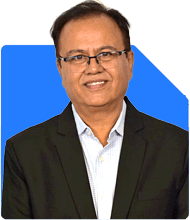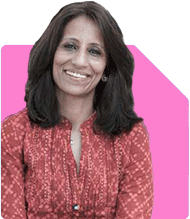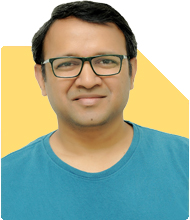Can I retire in 10 years with 2 kids, Rs.70 lakhs in savings, and various investments?
Ramalingam Kalirajan |10895 Answers |Ask -Follow
Mutual Funds, Financial Planning Expert - Answered on Aug 16, 2024
He has an MBA in finance from the University of Madras and is a certified financial planner.
He is the director and chief financial planner at Holistic Investment, a Chennai-based firm that offers financial planning and wealth management advice.... more

Hello sir...my age is 36 ive two kids (age 7yrs and 3yrs)...I've shares of around 20 lakhs ..mutual fund investment (current value 18lakhs(sip 24000 p.m) ppf investment of around 38lakhs and gold coins worth 40 lakhs..I also have fds of around 25lakhs invested in several banks..I want to retire in next 10 years....my monthly expenses are 1lakh p.m.ive no liabilities as of now..is it possible for me to achieve my goal? I also have 70lakhs in my savings a/c...what else can I do to maximize my corpus in this time..I know I'll be needing 35-40 lakhs in next 15 years for my children education..? please guide...right now I'm investing 3lakhs annually in ppf account(me and my wife's account) and 24k monthly sip...
Shares: Rs. 20 lakhs
Mutual Fund Investments: Rs. 18 lakhs (with a SIP of Rs. 24,000 per month)
PPF Investments: Rs. 38 lakhs (contributing Rs. 3 lakhs annually)
Gold Coins: Rs. 40 lakhs
Fixed Deposits: Rs. 25 lakhs
Savings Account: Rs. 70 lakhs
Your monthly expenses are Rs. 1 lakh, and you have no liabilities. You also foresee needing Rs. 35-40 lakhs for your children's education in the next 15 years. Your goal is to retire in the next 10 years.
Retirement Planning
Retiring in 10 years requires careful planning. Your current monthly expenses are Rs. 1 lakh, which will likely increase due to inflation.
Inflation Impact:
Assume an inflation rate of 6%. Your current Rs. 1 lakh monthly expense will increase to approximately Rs. 1.79 lakhs in 10 years.
Retirement Corpus Requirement:
To maintain your lifestyle post-retirement, you’ll need a corpus that generates an income of Rs. 1.79 lakhs per month, adjusted for inflation over time.
Current Assets Growth:
Your existing investments, if managed properly, will grow over the next 10 years. Assume a balanced portfolio growth rate of 8-10% per annum. You can achieve significant growth in your overall corpus.
Children’s Education Planning
Your children’s education will require substantial funds. Planning early will ensure you meet this goal without affecting your retirement.
Dedicated Fund Allocation:
Set aside a specific portion of your current savings or investments for this purpose. You may consider equity mutual funds, which have the potential for higher returns over the long term.
Systematic Investment:
Continue with your SIPs and consider increasing the amount. A targeted approach towards your children’s education will help you build the required corpus of Rs. 35-40 lakhs.
Maximizing Your Corpus
Given your current financial status, you have several options to maximize your corpus over the next 10 years:
Increase SIP Contributions:
Consider increasing your monthly SIP contributions. If you can increase by Rs. 10,000 or more, it will substantially boost your investment growth over time.
Optimize Equity Portfolio:
Review and diversify your equity portfolio. Ensure a good mix of large-cap, mid-cap, and small-cap stocks. This strategy will balance risk and return.
Consider Debt Mutual Funds:
Instead of fixed deposits, which offer lower returns, explore debt mutual funds. They are more tax-efficient and can offer better returns than traditional FDs.
Utilize Savings Account Efficiently:
Your Rs. 70 lakhs in the savings account should be optimized. Consider moving a portion to higher-yielding investments like debt funds or balanced mutual funds.
Review PPF Investments:
While PPF is a safe and tax-efficient investment, its returns are moderate. Ensure that your PPF contributions align with your long-term goals. You may consider reallocating some funds to equity for better growth.
Manage Gold Investment:
Gold is a good hedge against inflation, but its returns are generally lower compared to equity. Consider keeping a portion in gold but think about reallocating some into higher-return investments.
Create an Emergency Fund:
Maintain an emergency fund equivalent to 6-12 months of expenses. This should be kept in a liquid fund or high-interest savings account to ensure liquidity.
Asset Allocation Strategy
To achieve your goals, a balanced asset allocation strategy is crucial. Here’s a suggested approach:
Equity: 50-60% of your portfolio in equity (shares and mutual funds) for growth potential.
Debt: 20-30% in debt instruments like debt mutual funds or PPF for stability and tax efficiency.
Gold: 10-15% in gold as a hedge against inflation.
Cash and Liquids: Keep a small portion in savings accounts or liquid funds for emergencies.
Risk Management and Insurance
Risk management is an integral part of financial planning. Ensure you are adequately insured:
Life Insurance:
Ensure you have sufficient life insurance cover to protect your family’s financial future in case of unforeseen events. Consider term insurance for cost-effective coverage.
Health Insurance:
Ensure you and your family have comprehensive health insurance. Medical emergencies can disrupt your financial plans, so it’s crucial to have adequate coverage.
Monitoring and Review
Regularly monitor and review your financial plan. This will ensure that your investments are aligned with your goals and can adjust for changes in your circumstances or the market.
Periodic Reviews:
Review your portfolio at least annually. Assess performance and make necessary adjustments to your asset allocation or investment strategy.
Rebalancing:
As you approach your retirement goal, gradually rebalance your portfolio to reduce exposure to high-risk assets like equity and increase allocation to safer assets.
Final Insights
Your financial discipline has put you in a strong position. With strategic adjustments and continued focus, you can achieve your goal of retiring in 10 years and providing for your children’s education.
Focus on optimizing your existing assets, increasing your investments, and managing risks effectively. Regular reviews and adjustments will keep you on track to meet your goals.
Best Regards,
K. Ramalingam, MBA, CFP
Chief Financial Planner
www.holisticinvestment.in
You may like to see similar questions and answers below
Sunil Lala | Answer |Ask -Follow
Financial Planner - Answered on Aug 04, 2024
Ramalingam Kalirajan |10895 Answers |Ask -Follow
Mutual Funds, Financial Planning Expert - Answered on Jul 30, 2025
Ramalingam Kalirajan |10895 Answers |Ask -Follow
Mutual Funds, Financial Planning Expert - Answered on Dec 17, 2025
Mayank Chandel |2576 Answers |Ask -Follow
IIT-JEE, NEET-UG, SAT, CLAT, CA, CS Exam Expert - Answered on Dec 17, 2025
Radheshyam Zanwar |6747 Answers |Ask -Follow
MHT-CET, IIT-JEE, NEET-UG Expert - Answered on Dec 16, 2025
Shalini Singh |181 Answers |Ask -Follow
Dating Coach - Answered on Dec 16, 2025
Patrick Dsouza |1429 Answers |Ask -Follow
CAT, XAT, CMAT, CET Expert - Answered on Dec 16, 2025
Nayagam P P |10858 Answers |Ask -Follow
Career Counsellor - Answered on Dec 16, 2025
Nayagam P P |10858 Answers |Ask -Follow
Career Counsellor - Answered on Dec 16, 2025
Samraat Jadhav |2510 Answers |Ask -Follow
Stock Market Expert - Answered on Dec 16, 2025
Samraat Jadhav |2510 Answers |Ask -Follow
Stock Market Expert - Answered on Dec 16, 2025
Nayagam P P |10858 Answers |Ask -Follow
Career Counsellor - Answered on Dec 16, 2025

























